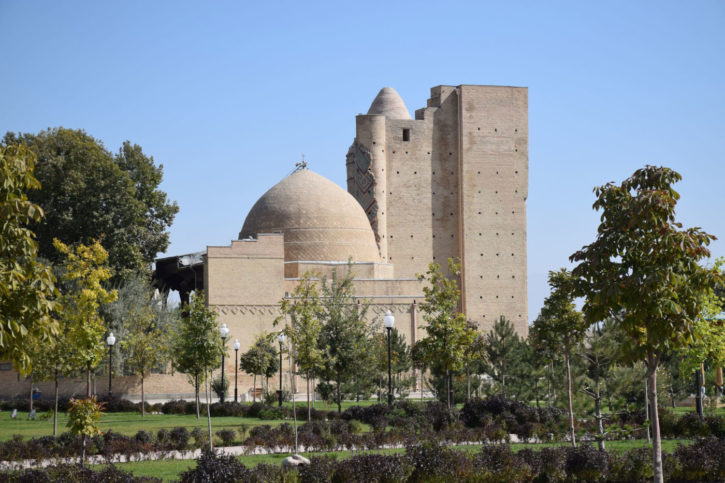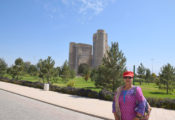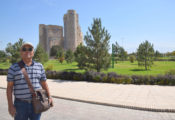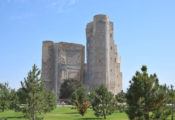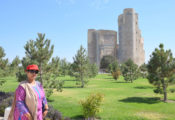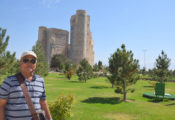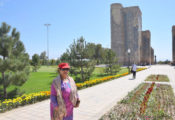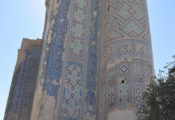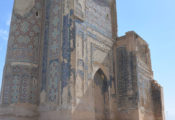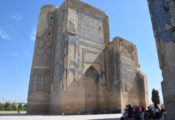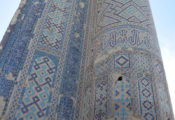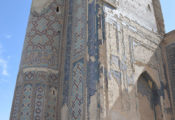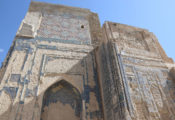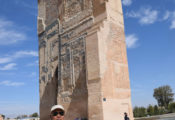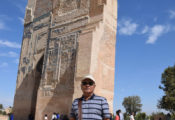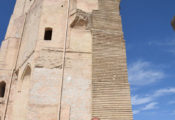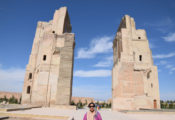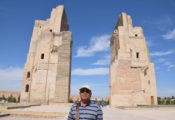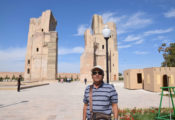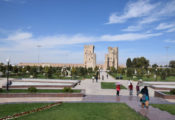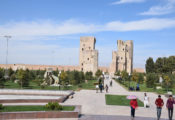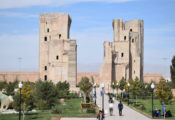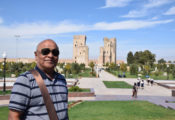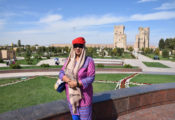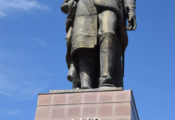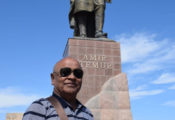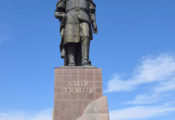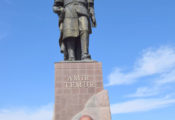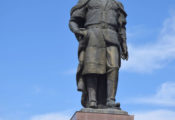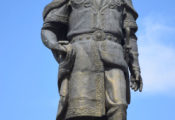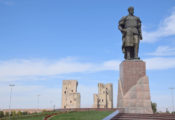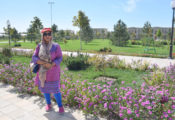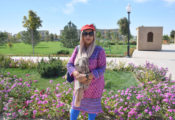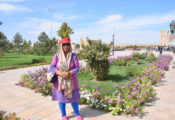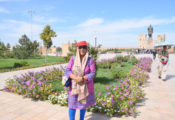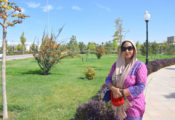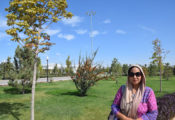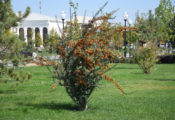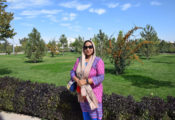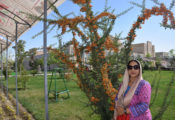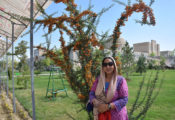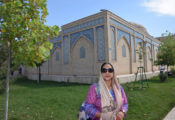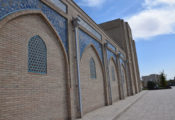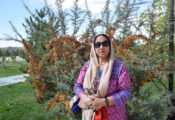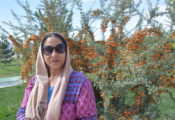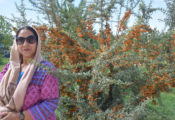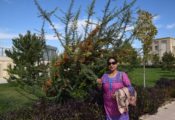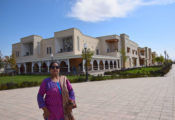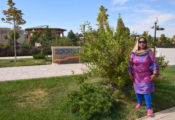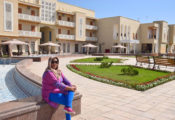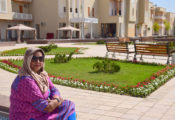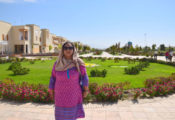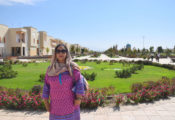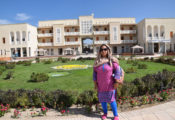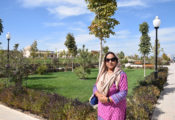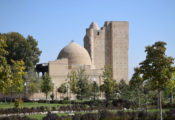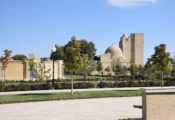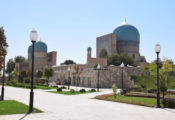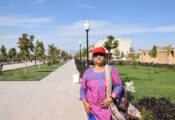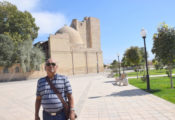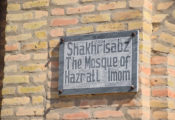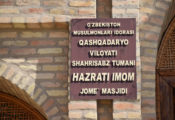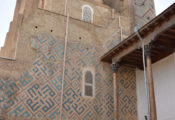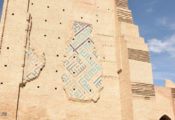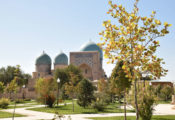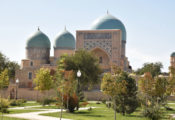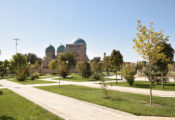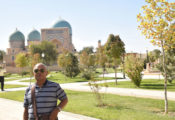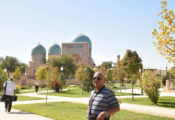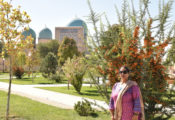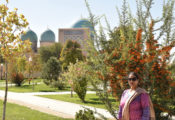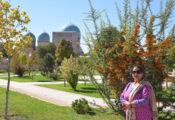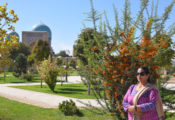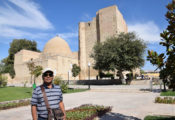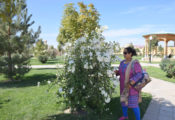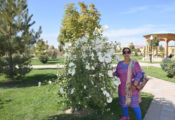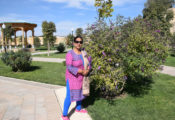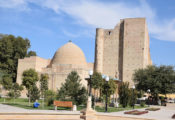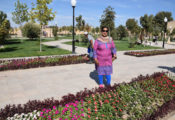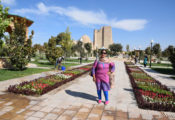Shakhrisabz is one of the most beautiful and colorful Uzbekistan cities, which is located 80 km south of Samarkand, beyond the alpine pass of Takhta-Karacha, in this ancient city, one can see all the beauty of this great green garden.
Looking at the well-groomed modern appearance it is difficult to believe that this city is 2700 years old and that it has played a significant role in the history of Central Asian region. Formerly Shakhrisabz was the capital of the ancient state of Sogd and had the name of Kesh. It was the famous center of culture, trade and handicrafts. In 329 BC Alexander the Great conquered the city and soon Hellenistic culture and cult of the Greek gods appeared there. Over millennium Shakhrisabz was under the reign of various dynasties and in the 8th century it was the center of anti-Arab and anti-Islam rebellion.
Today this wonderful city is more famous thanks to Amir Temur (Tamerlane), who was born in the neighboring village of Hodja-Ilgar. Becoming the ruler, he turned Shakhrisabz into his residence and ordered to build the palace, known as Ak-Saray (White palace). By the way, at that time Kesh was renamed to Shakhrisabz, which means in Persian “Green city”.
Today the city has a lot of architectural sights; historical center of the city is inscribed on the UNESCO World Heritage List. Here you will find ruins of the palace Ak-Saray, the memorial complex Dorut Tilovat, the mosque Kok-Gumbaz, mausoleums Dorus Siodat, Shamsad-Dina Kulyala, Gumbazi-Seyidan. For years, the city government has been planning the city building so that to preserve ancient Shakhrisabz monuments for next generations.
AK SAROY PALACE
Several monumental buildings were built in Shakhrisabz in the time of the Temurids. The most magnificent of them is Ak-Saray Palace. Its fantastic ruins can be seen from afar and make a deep impression. Amir Temur meant to make Shakhrisabz the second capital of his empire, no less sumptuous than Samarkand. The construction of the palace was started in 1380 and lasted more than 25 years. It is known that architects and handicraftsmen from Khorezm, shortly before subjugated by Temur, took part in the construction of the palace. Several legends are connected with the history of this grandiose structure. As one of them says, some gold sand was put into the clay intended for making the first bricks for the royal structure.
The construction works were carried out on a ‘kingly scale’ indeed. The great ruler begrudged no money. His buildings were supposed to be the biggest and the very best in the world. It was not without purpose that on the portal of his palace there was made an inscription that says: “Those who doubt my power and munificence should look at my buildings” On the basis of descriptions made by Temur’s contemporaries, as well as archeological research materials, the scientists managed to reconstruct the layout and artistic design of the palace. Though “Ak-Saray” means “White Palace” in Uzbek, in the context of a name for a palace the word ‘white’ can be interpreted as “ noble, regal”. What amazes a visitor first is the magnitude of the building. The inner courtyard alone was 250 metres in length and 125 metres in width. The height of the main portal crowned with arched battlement, was 70 metres – the size of a 20-storey building. Corner towers were no less than 80 metres high whereas the entrance arch span exceeded 22 metres.

